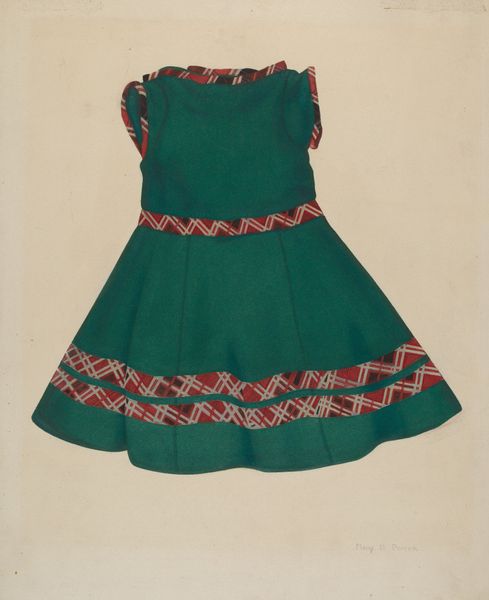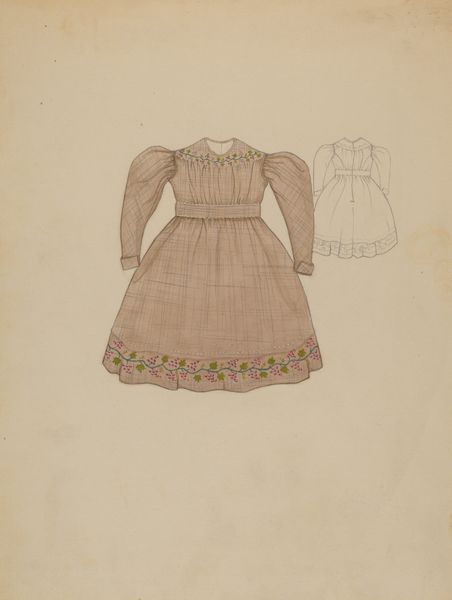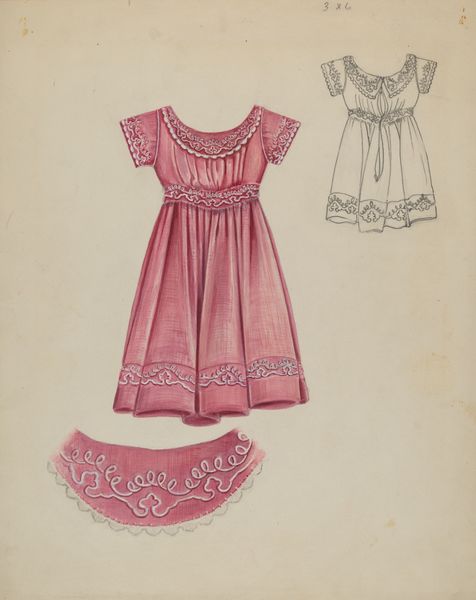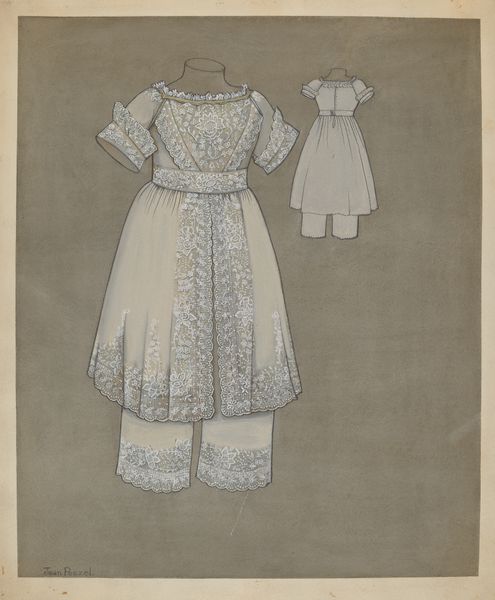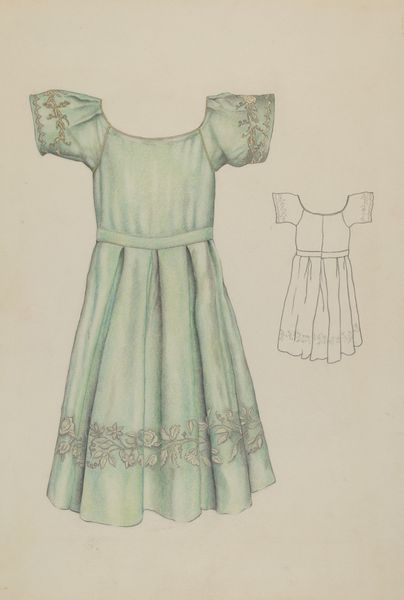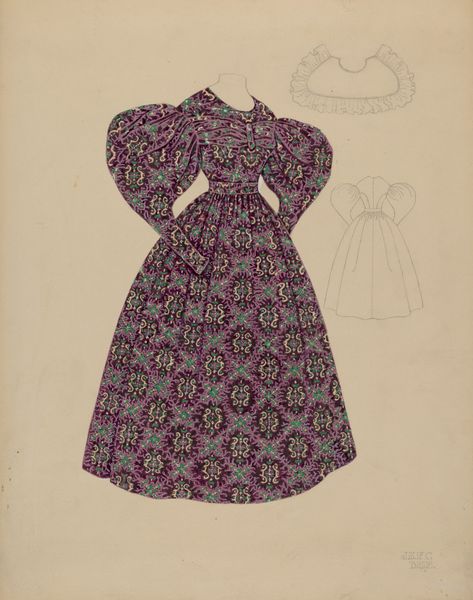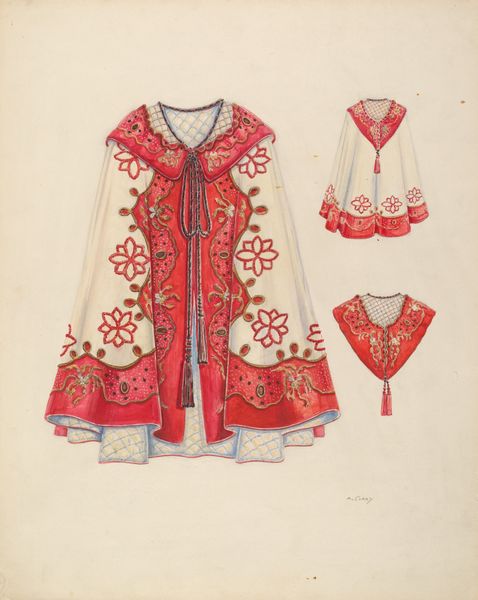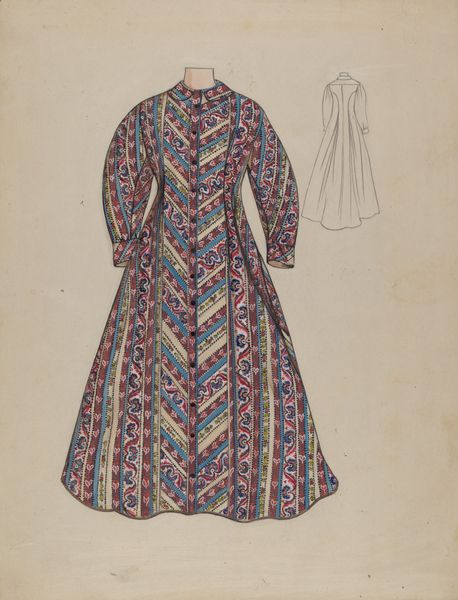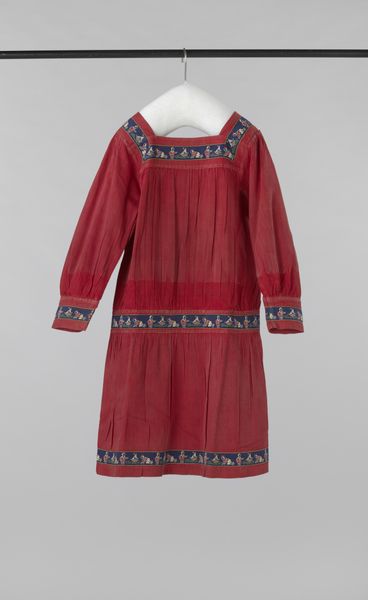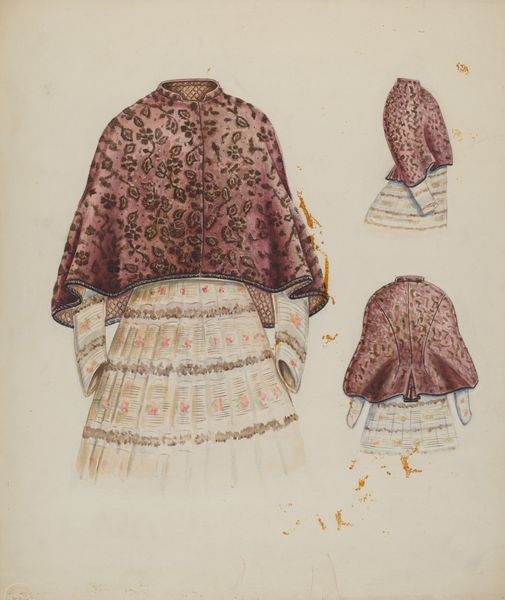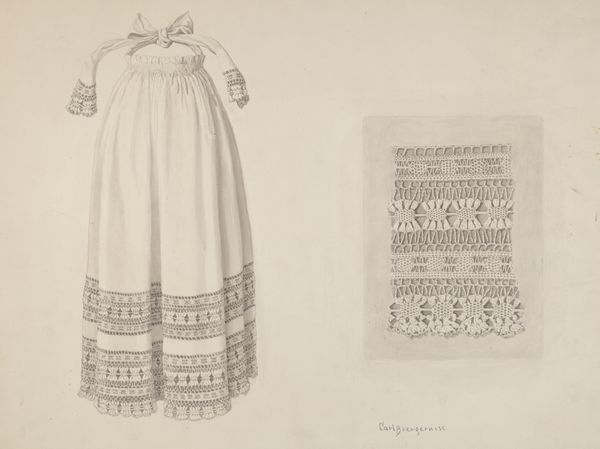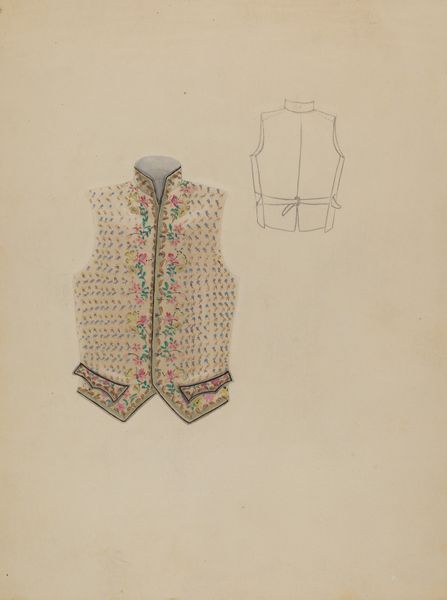
drawing, tempera
#
drawing
#
tempera
#
historical fashion
#
decorative-art
Dimensions: overall: 32.4 x 43.7 cm (12 3/4 x 17 3/16 in.)
Copyright: National Gallery of Art: CC0 1.0
Curator: Well, here we have Lucien Verbeke's "Child's Dress and Jacket," believed to have been rendered circa 1937. It's a drawing, using tempera, of a child's outfit. Editor: It's undeniably charming, with its muted palette. The texture, particularly the way light plays across the surfaces, creates a sense of gentle softness. There is a sort of tenderness there. Curator: It's fascinating to consider how this garment reflects the interwar fashion trends for children—balancing functionality with decorative elements. Notice the geometric patterned trim. It may evoke some ideas about modernity in a time of economic recovery. Editor: Absolutely. Those geometric shapes punctuate the composition and give an overall sensation of careful precision and a quiet dignity in the craftsmanship. Curator: Indeed. Such attention to detail indicates the care taken in dressing children and hints at values about outward appearances, specifically within its cultural milieu. Editor: And it does all that through relatively simple artistic decisions—a specific choice of colors that evoke a sort of nostalgic calmness. Then, look how the artist rendered depth without heavy shading or modeling. It feels weightless, almost dreamlike. Curator: That dreamlike quality is perhaps tied to the broader socio-economic environment. In difficult times, domestic skills such as clothing construction took on significance. Children's clothing can be viewed as symbolic of a mother’s care. Editor: Looking at the texture and seeing what seems like chalky color consistency of the tempera medium also connects it with illustrations—as opposed to what we see on display in fine arts galleries and museums. Curator: That makes me reflect on how artworks like this gained importance for what it documents and what it means about taste, fashion, labor, and, ultimately, value in society. Editor: I agree completely. Focusing back on composition, the choice to depict the set apart against the pale neutral field pushes the viewer to recognize it outside of an external frame of reference. I read that decision as pushing the viewer into noticing design. Curator: So, Verbeke’s seemingly straightforward rendering, when considered within a social framework, unlocks richer narratives concerning 20th-century lifestyles and material culture. Editor: And conversely, that cultural background helps contextualize the choices he made about how to visualize shape, light, and medium on a basic level.
Comments
No comments
Be the first to comment and join the conversation on the ultimate creative platform.
